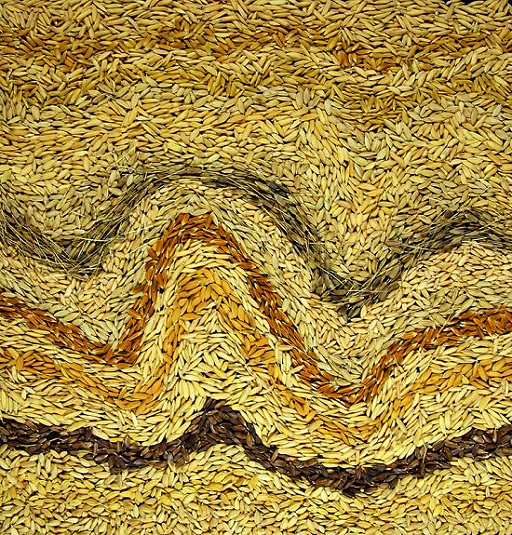The Seed Information Database
The photograph below places 20 varieties of rice in rows reflecting the landscapes where they are grown - from lowland paddies to sloping uplands. It shows some of the diversity within this crop that is visible just by looking at the seeds. In fact, Asian cultivated rice is divided into different ‘variety groups’ based on their genetic relatedness. Indica rice (at the top) is one of those variety groups, and the previous study focused on accessions from within this variety group. Let’s use the Seed Information Database to model the behaviour of Indica rice in storage.

Now go back to the viability calculator of the Seed Information Database. Look up Indica rice (Oryza sativa Indica). Can you model the behavior of Indica rice under these conditions: 12% equilibrium moisture content at 45°C over a period of 20 days? What happens to final viability when you change the temperature, equilibrium moisture content, or number of days? How does the behavior of Indica rice differ from the behavior of Japonica rice, under similar conditions?
Use the text box below to record what you have learned. These notes are for your own development: they will not be shared with course colleagues or moderators.
Investigating variations in longevity
